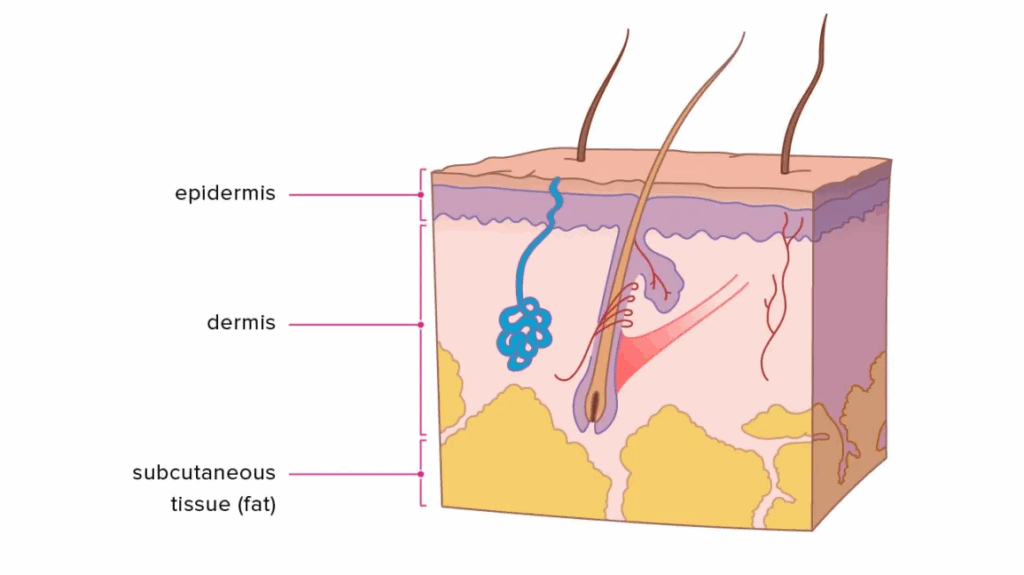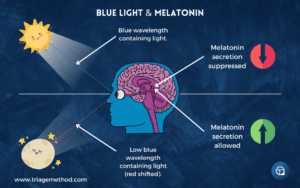How do these products actually work and are they worth their price?

A variety of moisturizers ranging from high-to-low-end. https://www.goodhousekeeping.com/beauty-products/g5014/best-face-moisturizer
As of 2025, the global skincare market size is worth 122.11 billion USD and is projected to grow to 194.05 billion USD by 2032 (1). The market’s growth is attributed to the rising demand for personalized beauty and anti-aging treatments; this culture is driven by consumers’ desire to conform to the societal ideals of looking younger and healthier by acquiring a plethora of skin-care products (1). One of the categories at the forefront of the industry is moisturizers. Leaders in the market like Estée Lauder and L’Oréal claim their products will “reduce signs of aging by hiding wrinkles,” “brighten acne scars,” and “improve skin barrier resilience” (2). So, how do these products actually work?
The skin is the largest organ and is constituted of water, protein, fats, and minerals (3). There are three main layers of skin: the outer layer called the epidermis; the middle layer called dermis; and the inner layer called subcutaneous tissue. Altogether, these barriers protect us from harmful toxins and infectious agents in the environment (3). As we move throughout the day, skin naturally dries out by a process called transepidermal water loss (TEWL) in which water passively evaporates through the epidermis into the air. Factors like aging, genetics, humidity, and skin conditions can influence TEWL and therefore alter the appearance of your skin (4).

A diagram of the different layers of skin. https://www.healthline.com/health/layers-of-skin
Each moisturizer contains a combination of the three main moisturizer ingredient types: occlusives, humectants, and emollients (4). Occlusives hold water in the skin by forming a barrier over it so that water cannot penetrate. This action stops evaporation and keeps the skin moist. Popular occlusive moisturizers include Aquaphor and Vaseline which can reduce TEWL by 98% (5). Humectants attract and retain moisture by guiding younger moist cells towards the epidermis. Like a sponge, this substance draws water up from the dermis and in humid conditions, from the air too. Additionally, humectants stimulate the production of ceramides which are waxy molecules that reduce TEWL (4). Emollients, though they are made from similar chemicals as occlusives, penetrate the skin and fill in dry spots, leaving a smooth, flexible feeling on the skin. The skin’s textured structure is made of dead cells, called corneocytes and fatty layers of lipids which are linked by proteins. When moisture levels in the air drops, the proteins break down and fractures form in the groups of corneocytes. Emollients replenish lost lipids and restore flexibility on the skin’s surface (5).
To better understand how moisturizers work, it helps to look at specific ingredients that deliver these effects. For example, hyaluronic acid is found across many moisturizers. Although our bodies naturally produce hyaluronic acid, it works as a humectant in topical creams and can even hold up to a thousand times its weight in water (6). Another popular ingredient is niacinamide, a form of vitamin B3. It’s used to treat acne by enhancing the function of the skin’s lipid barrier, a layer of water and oil that protects your skin. This helps lock moisture in and keep pollutants out which reduces skin sensitivity (7). Retinol is another sought-after ingredient for its anti-aging benefits. It is a vitamin A derivative which is used to promote cell turnover, reduce fine lines and wrinkles, and improve skin texture and tone (8).
Moisturizers range from drug-store products that cost a few bucks to high-end luxury creams that can cost up to the thousands. “High-end” companies advertise their products’ complex ingredients to intrigue and captivate consumers. For example, La Mer’s Crème de la Mer, which costs $200 per ounce, contains “Miracle Broth™”, a bioferminated elixir made from sea kelp, vitamins, minerals, and other nutrients to soothe and renew the skin (9). La Prairie’s Skin Caviar Luxe Cream, which costs $350 per ounce, is infused with caviar extract which is claimed to nourish and firm the skin (10). However, when asked about these $100+ creams, Dr. Samer Jaber of the Washington Square Dermatology states, “When you’re getting a fancy, expensive moisturizer, you’re really paying for the packaging, you’re paying for the marketing, and then sometimes [they] have some proprietary ingredients or chemicals that are more rare and a little more expensive” (11). In addition, since most beauty companies are part of the same larger corporations, it’s not uncommon to see a similar formula between an “inexpensive” and an “expensive” product.
As cosmetic chemist and founder of “The Beauty Brand” blog Perry Rowanowski puts it: “Product cost has little to do with the effectiveness of the product,” (11). Many dermatologists emphasize that while moisturizers can improve skin hydration and texture, they cannot permanently reverse aging or fundamentally alter skin biology (2). The temporary plumping effect and smooth finish from the creams creates the illusion of transformation; however, these products cannot truly reverse the aging process. Social media further amplifies these claims as influencers frequently showcase “before-and-after” results that are altered by lighting and filters. The moral of the story is to simply find a cream that works—it doesn’t have to be expensive or filled with luxurious ingredients, just find an option that suits your needs.
Works Cited
- Fortune Business Insights. (2025). Skincare market size, analysis | skin care industry trends, 2026. Www.fortunebusinessinsights.com; Fortune Business Insights. https://www.fortunebusinessinsights.com/skin-care-market-102544
- Kilbane, B. (2024, October). The Confusing World of Skincare Claims, Explained. The Business of Fashion. https://www.businessoffashion.com/articles/beauty/the-confusing-world-of-skincare-claims-explained-cerave-drunk-elephant/
- Cleveland Clinic. “Skin: Layers, Structure and Function.” Cleveland Clinic, Cleveland Clinic, 13 Oct. 2021, my.clevelandclinic.org/health/body/10978-skin.
- Harvard Health Publishing. “Moisturizers: Do They Work? – Harvard Health.” Harvard Health, Harvard Health, 29 May 2019, www.health.harvard.edu/staying-healthy/moisturizers-do-they-work.
- Reactions . “How Does Moisturizer Work?” Www.youtube.com, 26 Jan. 2015, www.youtube.com/watch?v=QdNPiW4ZULk.
- Cleveland Clinic. “Hyaluronic Acid: What It Is, Benefits, How to Use & Side Effects.” Cleveland Clinic, 4 May 2022, my.clevelandclinic.org/health/articles/22915-hyaluronic-acid.
- WebMD. (2019). Niacinamide: Uses, Side Effects, Interactions, Dosage, and Warning. Webmd.com. https://www.webmd.com/vitamins/ai/ingredientmono-1534/niacinamide
- Cherney, K. (2020, May 28). How Does Retinol Work? Facts, Side Effects, and More. Healthline. https://www.healthline.com/health/beauty-skin-care/how-does-retinol-work
- Crème de la Mer. (2019). Crème de La Mer. https://www.cremedelamer.com/product/5834/12343/face/moisturizers/creme-de-la-mer?srsltid=AfmBOopOvEABoihaybYQKRpGPhu5VO5ah-rjm5U-_jMAH_gBWwd9WFgf#/sku/26766
- SKIN CAVIAR LUXE CREAM 50 ml / 1.7 oz. (2023). Laprairie.com. https://www.laprairie.com/en-us/skin-caviar-collection/luxe-cream/MV0060.html?srsltid=AfmBOoqqulYLi06xYeKJ-aIHuzdAoCsgTLXwoe0gfBLgG26JSIN1Qlco
- Brucculeiri, Julia. “Why That $325 Moisturizer Might Not Be Any Better than a $12 One.” HuffPost, 24 Jan. 2019, www.huffpost.com/entry/face-moisturizer-expensive_l_5c48813de4b083c46d649020.






Comments are closed.